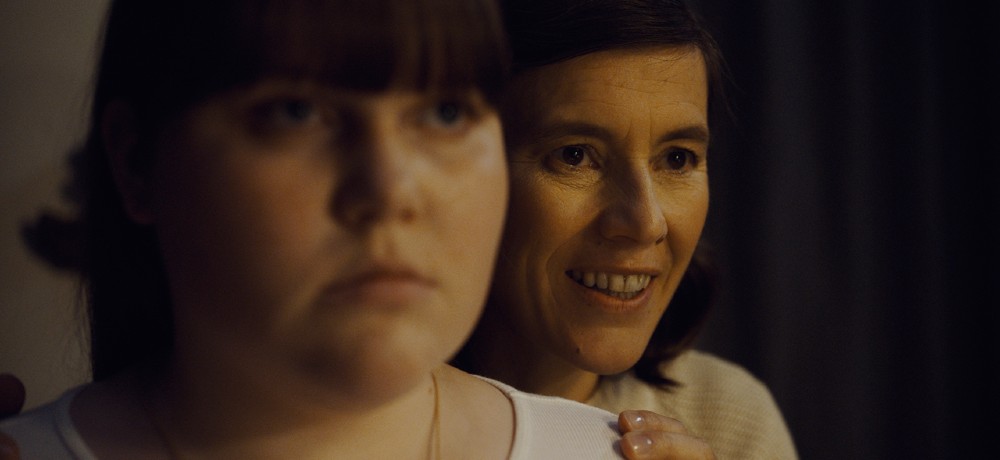


In writer/director Peter Hengl’s unsettling directorial debut Family Dinner, tension and dread are both on the menu as a teen’s desire to lose weight takes her on a sinister journey that culminates in a shocking finale that left me rattled. At the start, we’re introduced to Simi (Nina Katlein) who is being dropped off at the home of her aunt Claudia (Pia Hierzegger) who is a renowned nutritionist and author who specializes in clean culinary activities. Claudia lives on her compound with her lover Stefan (Michael Pink) and troubled teenage son Filipp (Alexander Sladek) who seemingly has more issues than a subscription to Rolling Stone. When Simi arrives, she’s not exactly welcomed in by her hosts, but once she tells Claudia that she wants her aunt to help her change her life, the dynamic changes, and suddenly it seems like everything is looking up for Simi.
But as the false facades of Claudia and her family slowly slip away, revealing some horrifying truths, Simi realizes that her quest to better herself is riddled with unforeseen consequences that will forever change her relationship with food and with her family as well.
While I’d probably categorize Family Dinner more as an extremely dark drama than I would a straight-forward horror movie, that’s not to say that the last 15 minutes of the film aren’t deeply disconcerting in a way that I haven’t been able to shake over the last few weeks since I saw it, proving that genre storytelling isn’t something that fits into a specific box at all. Hengl does a fantastic job of creating an immediate sense of unease from the very first moments of Family Dinner and the way that things subtly amp up throughout the film perfectly mimics Simi’s own experiences in this story as she immediately senses that her arrival is anything but well-received by her hosts.
Hengl also spends a lot of time focused on food in Family Dinner, particularly whenever Claudia is doing meal preparation, and how cinematographer Gabriel Krajanek manages to capture the fruits of her character’s labor, as well as different characters’ interactions with Claudia’s culinary creations, perfectly amplifies the themes of Hengl’s script on a visual level. I also really loved Claudia’s house, which is the central locale of Family Dinner; I’m not entirely sure whether or not it is an existing structure or if aspects of the house were amplified by the work of production designer Pia Jaros, but in either case, the location is the perfect setting for Hengl’s story and really highlights Simi’s obvious discomfort whenever she’s inside the home.
While the entire cast of Family Dinner is great, it really is Katlein’s show, and the young actress confidently carries the film with her performance that’s both heartbreaking and fearless. Even if you’re not someone who has the same struggles as Simi does, Katlein’s portrayal of this teen who just wants to conform to society’s unfair standards for young women is relatable nonetheless. Hierzegger’s quiet evolution in the film into a ruthless villain whose treatment of everyone around her crosses so many lines does a lot to propel Hengl’s story forward, particularly in Family Dinner’s latter half, and when you couple that with her “dieting” techniques, Claudia might be the character that I have hated the most in a movie this year, which is a testament to Hierzegger’s performance here.
There’s a lot that I enjoyed about Family Dinner, but I think one of the things that I really appreciated about it the most was the fact that everything in the film is building towards Easter dinner (a holiday that rarely gets utilized in horror) and I love how well Hengl manages to take this holiday feast into an undeniably disturbing direction that satisfies and horrifies in equal measure. Hengl’s approach in Family Dinner might take its time to get to its destination, but once it does, I guarantee it’ll stick with you for long after the credits start to roll (just like it has with me).
Movie Score: 4/5